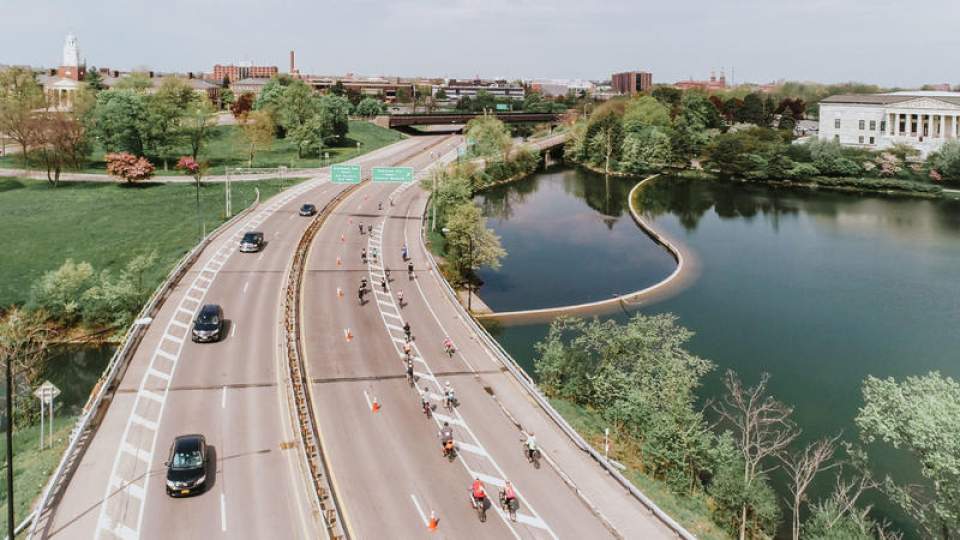News Take Action
Planning for Personal Electric Vehicles - Public Comment on the Redesign of Route 198
| Date: | June 24, 2021 |
| Share: |

The Greater Buffalo-Niagara Regional Transportation Council is leading the Region Central process to reimagine the Scajaquada Corridor and redesign Route 198 (the Scajaquada Expressway).
PPG Policy Fellow Dan Cadzow submitted the following public comment, highlighting the need to plan for personal electric vehicles that are growing in use in our parks and streets. PEVs can promote equity by offering an alternative to automobiles, and Dan recommends regulating and providing infrastructure for this mode of urban mobility. Read the full comment below.
Planning for Personal Electric Vehicles:
Comment on the Redesign of Route 198
Submitted to the Greater Buffalo Niagara Regional Transportation Council
By PPG Policy Fellow Dan Cadzow
June 2021
It is heartening to see this redevelopment be refocused on the whole community with equity as a key consideration. As we begin the transition from fossil fuels to renewables, we should plan for the multiplicity of personal electric vehicles (PEVs) that are emerging in our parks and streets. Segways, hover boards, one-wheels, electric bicycles, electric skateboards, etc. have top speeds of up to 20 MPH and ranges of up to 15 miles on a single charge. They will likely make up an increasing portion of urban mobility.
Given the space available within the Region Central corridor, it might be an excellent showcase for innovative infrastructure to support safe and equitably urban mobility with PEVs. When the laws were written that require bicycles to share the roads with automobiles, they traveled at roughly the same speed and bicycles were considered a danger to pedestrians.
It is now widely recognized that cars, trucks, and buses are very hazardous to pedestrians and cyclists alike. Based on current trends, it is likely that PEVs will increase in number, speed, and range. This suggests urban mobility might be best split into three modes: 1) pedestrian, 2) cyclists and PEVs, and 3) larger vehicles (cars, trucks, and buses). Regulation of behavior in these pathways should focus on things like speed and safety, rather than the strictly the mode of transportation. Cyclists in Delaware Park, for example, frequently exceed the 15 MPH speed limit, posing a hazard to pedestrians.
PEV infrastructure might feature smooth, permeable pavements as opposed to segmented concrete sidewalks. It should include charging, rental, and repair stations. Other infrastructure could include weather-safe storage outside of museums, schools, businesses, etc. This infrastructure should be coupled with advocacy for standardization of charging ports and the establishment of standardized, interchangeable battery packs. The industry should also be lobbied to build with unique keys, combinations, or apps that deter theft though disabling or tracking (e.g., Find My iPhone).
PEVs support social and environmental equity by relieving people from the economic burdens of automobiles (e.g., initial purchase, tax and registration fees, gas, maintenance, insurance, etc.), as well as by not causing traffic pollution and deadly crashes, or contributing to climate change. Given the numerous neighborhoods, schools, museums, and other cultural institutions, Region Central would be an excellent showcase for supporting safe and sustainable PEV travel.